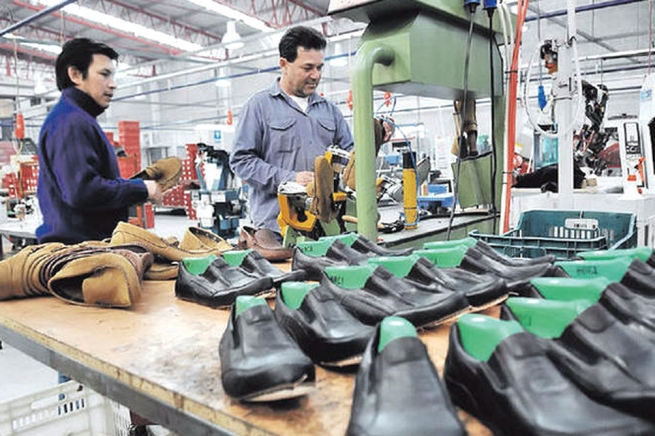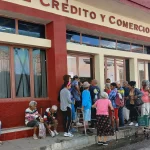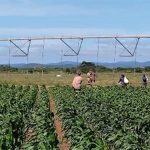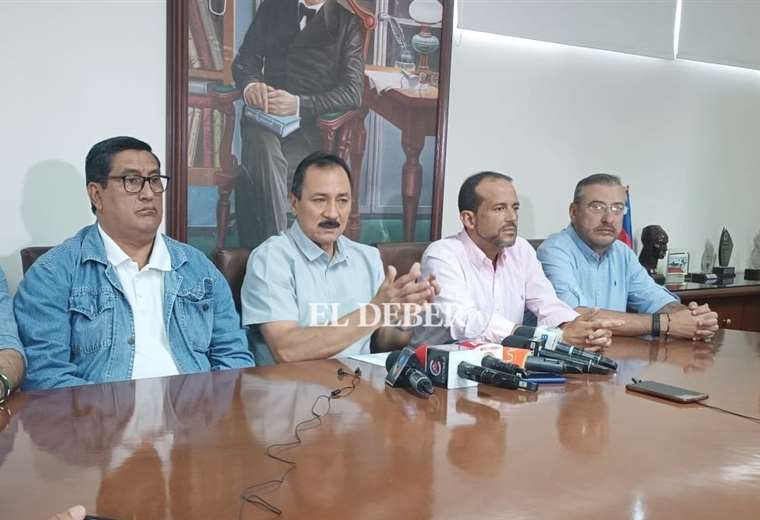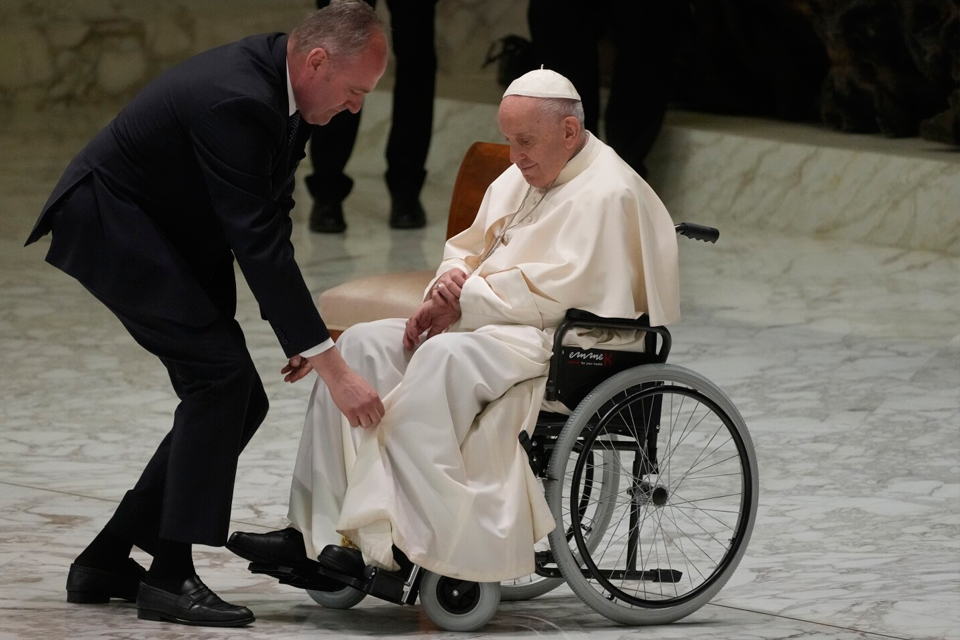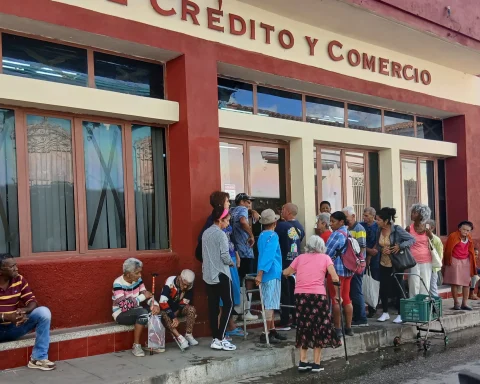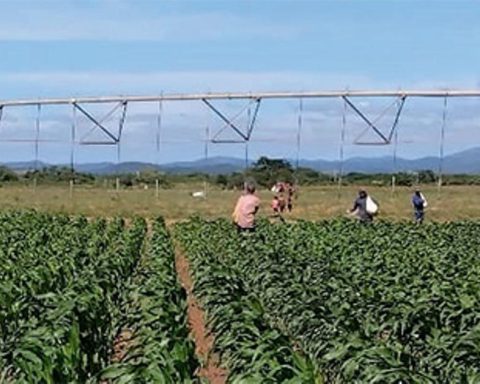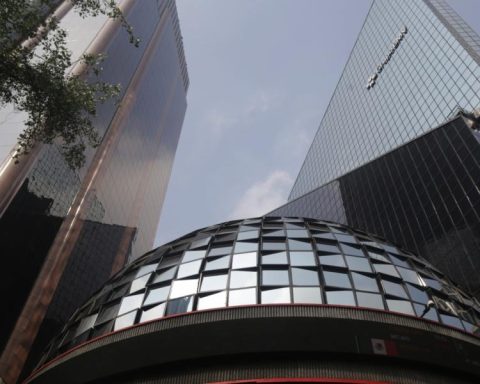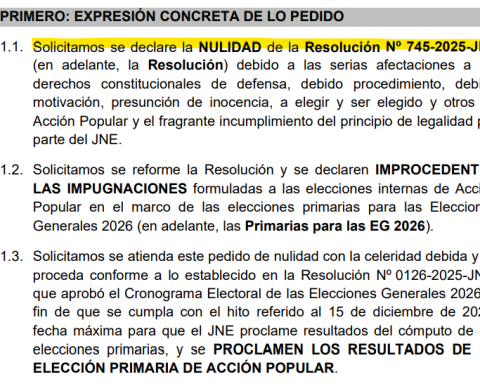the shoe industry is preparing to close a 2022 in which it could reach its production record and thus exceed the 125 million pairs made in 2015, but at the same time faces two “bottlenecks” derived both from the ups and downs of the activity in recent decades and its effect on the training of the workforce, as well as from the inconveniences in the provision of local and foreign inputs.
The panorama of a sector that is sensitive like few others to fluctuations in the exchange rate and to opening or protection policies was summarized in an interview granted to Télam by Horacio Moschetto, general secretary of the Chamber of the Footwear Industry (CIC), who considered “a little logical” these imbalances.
Moschetto pointed out that the sector’s production record was set in 2015, with 125 million pairs, a level that had an accelerated decrease if one takes into account that the following year 111 million were produced and that the declining trend was consolidated in the following years, until reaching 80 million pairs in 2019 Y, pandemic through, 56 million in 2020, the lowest mark since 2003.
The recovery came in 2021 with 91% annual growth that took the national production to 107 million pairs, with an expectation of “reaching this year to equal the record of 125 million in even we can grow more”, the general secretary of the CIC was enthusiastic.
“We had the launch of the summer season at the end of June and we have very good prospects,” he remarked.
However, the road is not free of obstacles that have accumulated over the years: the closure of companies, the drop in production levels and the breakdown of traditional intergenerational training were three factors that fully affected the labor and especially to the sewing, one of the main activities in the manufacture of footwear consisting of the union of pieces of the cut by gluing and sewing.

The “remarkable lack of manpower” was revealed by the leadership of the CIC in Efica (Exhibition of Manufacturers of the Footwear and Related Industry), although Moschetto pointed out that the business sector “took action on the matter” with “the training of new operators”.
In this regard, he highlighted the authorization of two training centers in the Buenos Aires districts of Avellaneda and La Matanza (historical epicenter of the footwear industry), plus one in formation in Lanús and in the interior of the province of Buenos Aires, in addition to another operating in the INTI (National Institute of Industrial Technology) .
Likewise, in 2018 the CIC reached an agreement with the University of Palermo the launch of the shoe designer career –first in Latin America– with the aim of professionalizing and specializing the operators of the sector.
“They are workers who will later join the industry,” confided Moschetto, who indicated that this loss of trained labor “is something that occurred with the closure of factories and the reduction in production, it was lost the transmission of knowledge from generation to generation, which resulted in some trades being transferred to other occupations”, a phenomenon shared with the textile and leather goods industries, among others.
Another activity problem pass by the provision of suppliesboth those made in the country (due to the increase in their prices) and those imported, in this case adhesives, chemicals, compounds such as Goma Eva or PVC, as well as “some fabric materials and linings”, detailed the general secretary of the CIC.
Moschetto also referred to the relationship of the local footwear industry and trade with Brazilwith which a deficit balance has been dragged for decades.
“We would like a more balanced balance, we always require that the Brazilian market consume more Argentine pairs,” he stated, in addition to pointing to “working and going out to look for foreign markets together” as one of the “pending accounts” of the sector.
In this regard, he considered that by presenting themselves to the rest of the world as Mercosur partners, an integration could be agreed, in which the industry of each country could advance with its respective specialties.
“For example, we could lead with leather boots and high-end men’s footwear, while they are stronger in the line of ladies, sandals and flip-flops,” he concluded.
An industry with origins dating back to the times of the Viceroyalty
The Argentine footwear industry currently has about 1,200 factories, predominantly SMEs, and some 50,000 direct and indirect jobsconcentrated mainly in the Metropolitan Area of Buenos Aires (AMBA).
Much of the population growth of the suburbs came hand in hand with the establishment of workshops and shoe factoriesand at that point the installations in the district of La Matanza from the beginning of the last century were decisive, but the history of the activity has a much more remote origin.
According to compilations of different investigations, the Chamber of the Footwear Industry (CIC) asserts that in 1778, when the Viceroyalty of the Río de La Plata It was only two years old, there were 250 shoemakers in what is now Argentine territory.
Already in 1869, the National Census registered 4,373 shoemakersincluding manufacturers and cobblers, and by the end of the 19th century there were hundreds of workshops making espadrilles and leather shoes of medium and low quality, since 90% of high-quality footwear was imported from Switzerland and France.
in 1885the partnership of the Basque Juan Echegaray and the Scotsman Robert Fraser give rise to the Argentine Espadrille Factory, starting scale production.
The impact of the First World War in the Argentine economy it was felt in this activity in particular, given the difficulties of accessing inputs and machinery, in addition to financial inconveniences.
It was so in 1916 the entrepreneurs of the sector form the Footwear Manufacturers Centerwhose first president was Luis Grimoldi, and which in 1924 changed to its current name.
In the fifty years that followed, the activity recorded sustained growth, in step with the integration of the working class into the consumer market, incentive policies for local industry and the incorporation of new technologies and modalities, with sports shoes and for the leisure.
The coup de grâce came with the abrupt devaluation and drop in real wages that meant the so-called “rodrigazo” of 1975, and especially the policy of economic opening with an undervalued exchange rate implemented from the following year by the dictator Jorge Rafael Videla and his minister José Alfredo Martínez de Hoz.
Since then, the importation of footwearwith its fluctuations, far exceeded exports.
“If we analyze the share of national footwear production with respect to imported footwear in domestic consumption, we can see that throughout the 1990s the market share of imports was very significant, reaching a maximum of 40% in 2001 “said the Chamber.
Sectoral trade balance data They speak for themselves: in 2001, 480,000 pairs were exported and 24.8 million were imported, that is, for each pair exported, 51.7 were imported when in 1991 that ratio had been 2.3 to 1.
From then on, “with the devaluation and the consequent increase in the price of imports, this participation was reduced and in recent years it has increased again,” the CIC said.
In 2021, 24% of the national consumption of footwear is supplied with imported products, with the remaining 76% covered by national production.
Between these two stages,to the 90’s marked the activity with a “negative performance” explained by the researcher Julia Cerutti in a report prepared for the Ministry of Economy.
Cerutti distinguishes three causes that explain the deterioration of the local footwear industry: “the first It is the indiscriminate opening of the early ’90s, which exposed companies to competition with imports, without mechanisms or possibilities of adapting to the new situation.
“Subsequently, the establishment of Mercosur and the delay in exchange made this industry even more confronted with the growing flow of imports,” he continued.
As a third factorindicated that “from China, but especially from Brazil, the increase in the number of imported pairs produced a strong incidence of imported pairs in apparent consumption, with the consequence of death of companies and loss of jobs.”
from 2002the sector resumes its growth by reversing the negative evolution of the previous decade, although the complete panorama of that year shows an ambivalent situation: production increased 24.9% compared to the previous year, but because the fall of 84.3 % in the import was not compensated with local footwear, the apparent consumption fell to the lowest level of at least the last three decades, with 48.6 million pairs.
Since then, production has shown an upward trend, with an accumulated growth of 243% between 2001 and 2015.
Between 2016 and 2020 production fell again (-55.2% in five years), while in 2021 the CIC registered “a strong reactivation”, to which were added “investments in new production lines, robotization of processes, incorporation of new technology and reopening of factories that they had suspended activity”.
With almost 107 million pairs made last year as a platform, the industry hopes to at least repeat the record performance of 2015.
For now, the production of the first quarter had a year-on-year increase of 63.6%, according to data from the National Institute of Statistics and Censuses (Indec).
